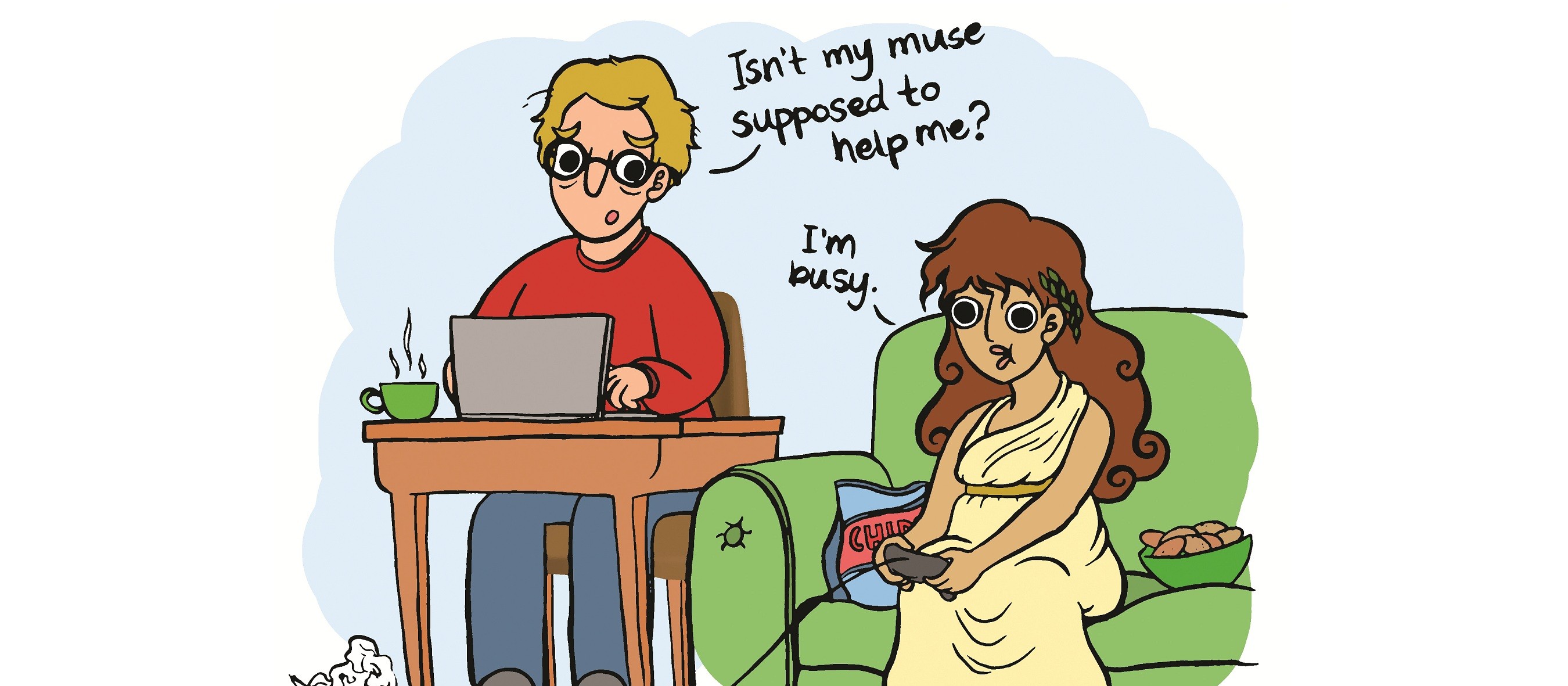Buried in a Sea of Crumpled Paper Balls
The frequency of a flashing cursor on your computer’s screen annoys and irritates you, like droplets of water dripping on your temple, surrounded in silence. The flashing cursor mocks you to the beat of an iamb, almost as if it’s saying “ha-HA!” Although a word processor cursor flashes with the frequency of an answering machine’s red light, there is no message from your muses. Rather, they make fun of you by leaving a message of pure static.
As a writer, I struggle with writer’s block all the time. To get inspiration for this article, I typed in “writer’s block” into Google and Google Images and found many stimuli to ignite my creative fuse. (Ironic, is it not? “Writer’s block” helped me a bit in overcoming my writer’s block.) I found an image that said “Writer’s Block: When Your Imaginary Friends Won’t Talk To You.” I call my “imaginary friend” my “muse” and she and I are in a complicated relationship. I also found images of people immersed ankle deep in crumpled paper balls, people resting their heads on their palms with their arms propped up on the table, and people ruffling their hair, looking frustrated.
In my creative writing classes, when I encounter a terrible bout of writer’s block, I cheat by writing about writing. Dating back to my stint as a professional student at California State University, Long Beach, all of the main characters in my short stories and novel portions either majored in English or had aspirations of being a writer. In my novel writing classes, I wrote about an ambitious CSULB English major named Shinji Escobedo who wanted to write the next “This Side of Paradise,” using his experiences attending an anime convention called Ani-May. Creating Shinji Escobedo had been based off of my experiences attending Fanime in San Jose, CA, and reading the works of F. Scott Fitzgerald, and there was also the autobiographical element of being an English major at CSULB with ambitions of writing.
Here, at the University of Washington, Tacoma, when I took a poetry class, my professor assigned the class to write an extended metaphor poem. I had absolutely no idea of what to write about, so I wrote an extended metaphor poem about an extended metaphor. And it worked. It even got accepted by a literary magazine!
The worst time to experience writer’s block is when a term paper’s due date looms on the horizon. Unlike creative writing assignments, the parameters are stricter for terms papers because they have to follow a rubric, such as that there must be a thesis statement, the paper must extract quotes from the text to support a thesis, and it must be a certain amount of pages. Short stories, too, follow a rubric: they need a conflict, well-developed characters, and a sensible plot. However, the rules for writing short stories are looser because they don’t require as much research as a term paper, and although the believability of fiction must be up to standards, fiction can be made up, unlike term papers which are nonfiction.
The cardinal sin for writers is plagiarism. Plagiarizing in any class is stupid; just take the F or zero, or ask your professor if he or she will accept your paper for partial credit. But plagiarizing in creative writing class is really stupid. Why? Because you can make stuff up! Back at CSULB, my friend told me that in his short story class, a student got into trouble because her work plagiarized the ending to the movie adaptation of Joyce Carol Oates’ short story “Where Are You Going, Where Have You Been?”–a movie that had been shown to the entire class previously.
There’s nothing wrong with being a literary thief. All great writers steal, but just be sure to give credit when it’s due.
So what’s the most effective way to combat writer’s block in both creative and academic classes? Persevere and just try to have fun.


